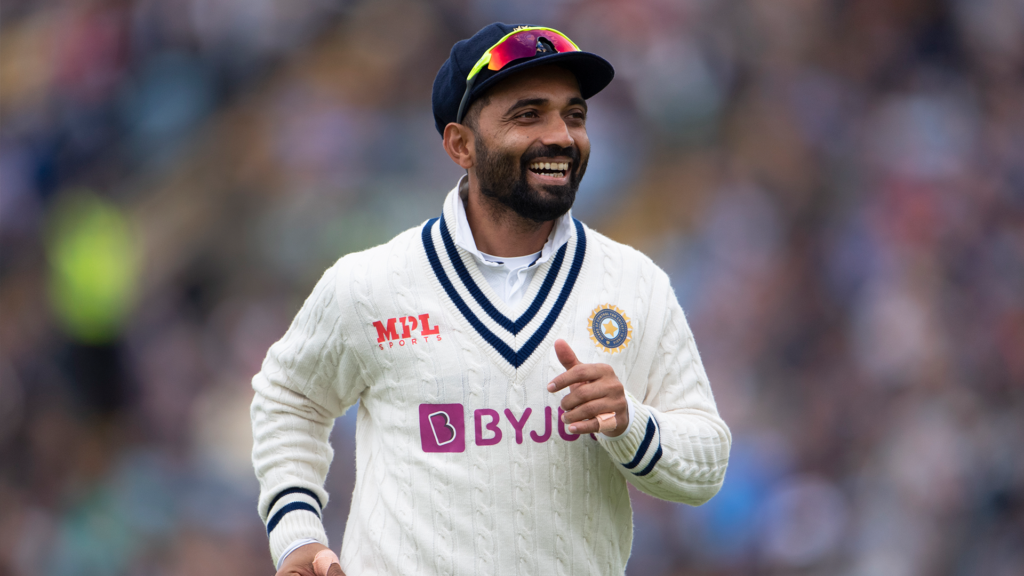
In a video that went viral at the end of India’s 2021 tour of Australia, the BCCI put out what Ajinkya Rahane, stand-in captain for three of the four Tests, had said to his teammates at the end of the Brisbane victory. What stood out for us were the two men Rahane singled out. He congratulated Kuldeep Yadav, the left-arm wrist-spin bowler, for his work ethic and told him that he would soon get an opportunity. Yadav was the only member of the squad who hadn’t played a Test in Australia. He also thanked young Kartik Tyagi for his contribution in the nets. These mentions revealed a lot about Rahane’s character as a leader.
“I had waited for a long time before I got my Test cap,” Rahane said to me soon after he had returned to Mumbai. “I knew how hard it was to be in the reserves for months, and yet contribute to the team. It was important, I speak to Kuldeep, for he is an important member of the side.”
For Ajju, as we fondly call him, nothing has come easy. It was after 16 months of carrying water bottles and hoping he would get the opportunity to play alongside Sachin Tendulkar, his childhood hero, that he finally made the Indian Test team. He was in the squad from the 2011 tour of Australia, and had seen both Suresh Raina and Murali Vijay make comebacks ahead of him.
He had watched Ravindra Jadeja and Shikhar Dhawan make their debuts, and been moved from being an opener to being a specialist middle-order batsman. None of it mattered to Rahane, for all he wanted was to play for India. When he was finally told at the team meeting in Delhi in March 2013 that he was playing, he just couldn’t hold back his tears. Soon after, he called his parents, Madhukar Baburao Rahane and Sujata Rahane, who had never watched their favourite Ajju play, and asked them to fly to Delhi the next morning to see him get his Test cap. Years of hard work and struggle had paid off for the Rahanes.
“I had taken Ajju to this camp in Mumbai when he was seven, and it had a matting wicket,” Madhukar had said, while watching the match from the BCCI Corporate Box at the Kotla. “We couldn’t afford any better. For me, it was an attempt to ensure he did not waste his time after school. The man who ran the camp showed him a black-and-white picture and asked, ‘Do you know who this is?’ It was a picture of Sachin Tendulkar. When Ajju said he did, he was asked if he wanted to play alongside him. To my extreme embarrassment, Ajju said yes, he would surely play with Sachin one day. I can’t believe he is actually doing so.”
ALSO READ: India Should Think Out of the Box for WTC Final
Unable to afford an auto ride, Sujata, his mother, carry Shashank, his younger brother, on her lap and walk 2km with Ajinkya every afternoon to ensure that he did not miss coaching. Her job was difficult. Taking Ajinkya to the coaching centre, and then back in time to pick him up. She was the one who carried the kitbag because it was too heavy for the eight-year-old Ajinkya. “It was difficult for me to tell Ajju we couldn’t take an auto every day,” said Sujata. “Seeing me struggle to carry the load, he would often say let us take an auto. Those were difficult days.”
At the time of his debut, Rahane had already scored 23 first-class hundreds in his career at an average of 62. It was no surprise that he was up for the challenge in Melbourne when India was playing a Test match after being bowled out for 36 in Adelaide (2020-21). Again, it was no surprise that he would go back to the grind of domestic cricket to try and make one final comeback into the Test team. A stellar IPL helped, and now, India will be hoping that the leader in Rahane turns up at The Oval. His presence in the dressing room will surely be a comforting one for Rohit Sharma and Rahul Dravid.
While it is difficult to ascertain what Rahane really felt going into the Boxing Day Test in 2020, suffice to say it was a cruel initiation to captaincy in Australia. And to add to his miseries, he lost the toss on a surface where the average first-innings score in the previous two years was a staggering 448.
Adversity, however, wasn’t new to him. While his initiation into Test cricket was rough, the subsequent journey wasn’t smooth either. He was yet again left out of the team in South Africa in January 2018, this time despite being the vice-captain. As Virat Kohli’s deputy in Test cricket then, he was bound to feel let down. “I wouldn’t deny it had pained me,” he told me later. “I was the vice-captain, and to not make the team in what was a very important series was frustrating. But then certain things are not in your hands, and all you need to do is look ahead to the next available opportunity.”
In the third and final Test in Johannesburg, which he played, he made a telling contribution and starred in an Indian win on a treacherous wicket.
Now that he is back in the team, that’s what all of India will be hoping from him. Rahane 2.0 is all about rediscovery and reinvention. A solid hand at The Oval, and the match could well be set up. With Rahane, we know it’s possible. And that’s because, like always, he has one tried-and-tested weapon to fall back on going into the WTC final — effort. Rahane was, is, and always will be about the struggle to excel.
ALSO READ: The WTC Final at The Oval is Rohit Sharma’s Tryst with Destiny



